Thomas Heatherwick was recently in town to talk about his latest project, the NTU Learning Hub, and offer insights to his body of work. This was complemented by New British Inventors: Inside Heatherwick Studio, an exhibition at the National Design Centre, which provided a holistic look at what happens in the idea driven ‘lab’. Stephanie Peh writes.

March 19th, 2015
Addressing a full theatre, Thomas Heatherwick began his lecture at LASALLE College of the Arts by providing context as to ‘why’ and ‘how’ he became a designer. Growing up, a young Heatherwick was never caught in a predicament where adults would question, ‘what do you want to be when you grow up?’ He spent his childhood immersed in things he enjoyed: spending time with his grandfather, who had a collection of books about people who changed the world with ideas; being taken to exhibitions where he saw designs for space, handmade ceramics or visions of a new London.
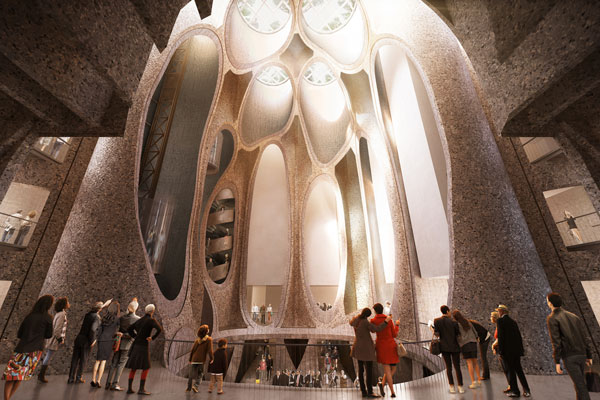
Zeitz MOCAA. Image courtesy of Heatherwick Studio
“It seemed that if something was interesting, be it a sculpture, writing, or painting, there was always an idea leading them. As I was growing a bit older, I thought of ideas and wanted to become an inventor,” he recalls. Since there were no courses labeled ‘inventing’, ‘design’ was the closest proximity. Heatherwick’s career progression seems as organic as his thinking process. As he shares, “there is no verb to ‘architecture’. You design. It is problem solving by thinking about how humans behave and what they need. I’ve always been interested in gaps, so I try to see if there is a way to bring in to being, things that would otherwise not happen.”
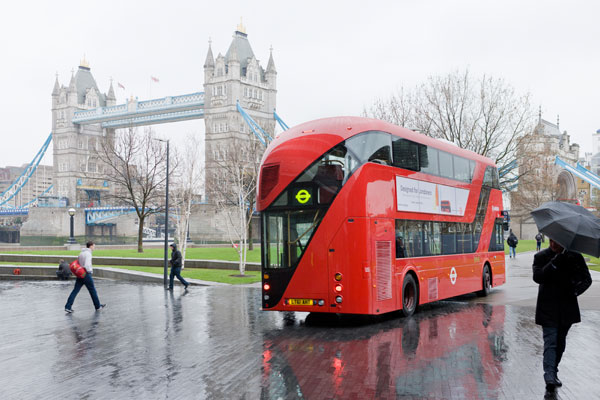
London Bus. Photography: Iwan Baan

Bombay Sapphire Distillery. Photography: Iwan Baan
Years later, Heatherwick would become passionate about projects that involved the human scale like public spaces such as buses, hospitals or schools. He enjoys the experience of taking what people have little expectations of, and making something out of them. “Maybe I don’t have the self-confidence to take things that are already beautiful and make them even more beautiful,” he jokes.
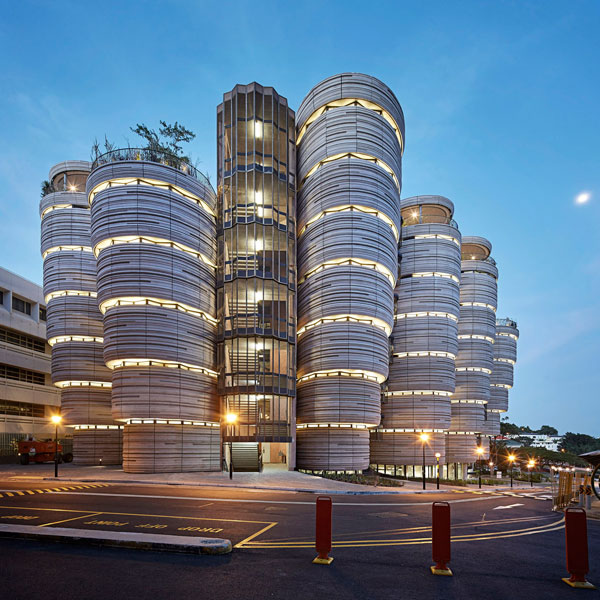
NTU Learning Hub. Photo courtesy of Heatherwick Studio
For the ambitious NTU Learning Hub, Heatherwick was tasked to address the burning question of the digital era: In the past, students would go to universities for books, but now that information is readily available on the Internet, what is the purpose of universities, if students could get a degree from their beds? Professors of the university recognised that the value of universities then, was for students to meet one another – a business partner, a soul mate or friend and hence asked Heatherwick Studio to create an environment that was more effective in fostering relationships.
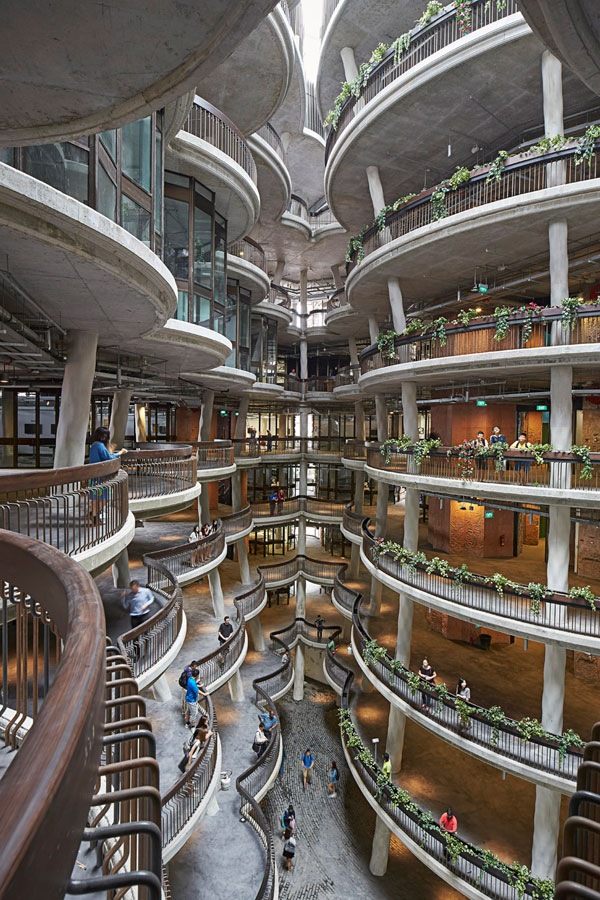
NTU Learning Hub. Photo courtesy of Heatherwick Studio
As a result, the NTU Learning Hub is a cluster of 12 instead of one building, removing the standard, dead corridor spaces that served solely as passageways from point to point. Aside from the new ‘corner-less’ study rooms that encouraged group sitting, the structure allowed for multiple space pockets in open areas, increasing the occurrence of encounters. It also meant that the public spaces need not be air-conditioned, as they were naturally ventilated – the building achieved Green Mark Platinum in its sustainability.

UK Pavilion. Photography: Iwan Baan
Despite resorting to concrete in the majority of the architecture due to budgetary concerns, Heatherwick was determined to make the most out of it. “Concrete reminded me of ceramics where it was possible to let it be raw, and not treated with an anxiety to make it look as if it was not handmade,” he shares, referring to columns that were given a texture made with a singular mould, creating a tactile feel “like a belly that you would be tempted to rub”. Walls were also treated with abstract debossed icons relating to art, politics, inventions, etc., triggering various thoughts.
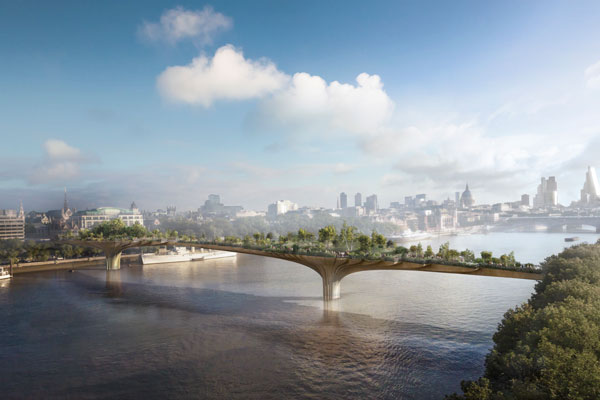
Garden Bridge. Image courtesy of Arup
Towards the end of his lecture, Heatherwick described another public facility that the studio had designed. Targeting to complete in 2018 is a 367-metre pedestrian ‘Garden Bridge’ that spans River Thames in London. A project that “designed itself”, where instead of having tall structures that typically supported bridges lurking behind trees, the studio designed two copper nickel planters that springed from the bottom of the river, and supported the weight of a tremendous amount of soil required for a proper garden to materialise.
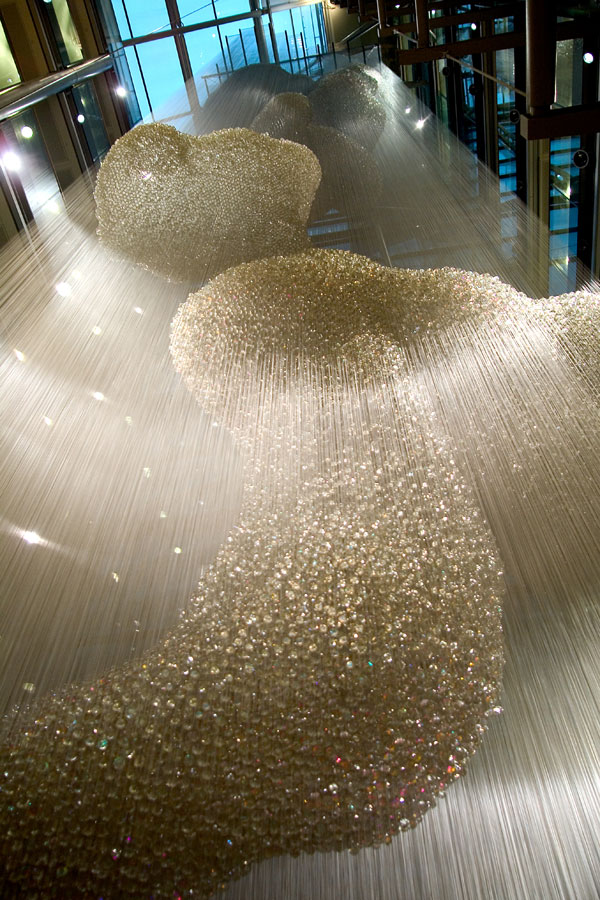
Bleigiessen. Photography: Steve Speller
Across the extensive body of work, it seems clear that Heatherwick’s ability to see ‘the bigger picture’ often guides his projects to succession. This is a conscious effort that had developed from childhood, where his father had often encouraged him to always take a step back to find another perspective. As the studio turns 21 this year, the 170-strong team has taken on only a modest 22 projects, at the moment. This is possibly due to the rigorous and labour intensive thinking system that is deeply embedded in the DNA of Heatherwick studio. As Heatherwick describes, “its like cooking. We slow cook to find the right stew.”
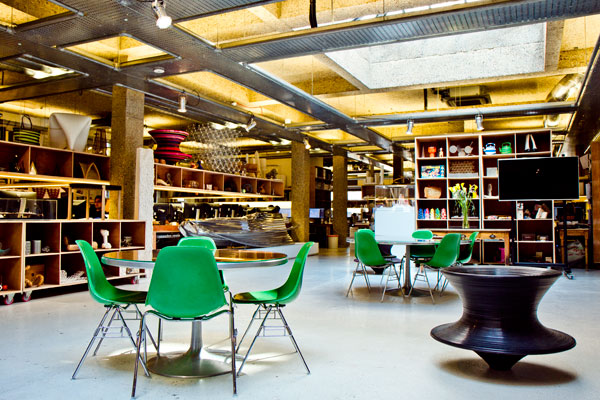
Heatherwick Studio. Photo courtesy of Heatherwick Studio
The New British Inventors: Inside Heatherwick Studio exhibition is organised by The British Council and runs until 12 April 2015, from 9am – 9pm at the National Design Centre.
* Look out for the upcoming NTU Learning Hub project feature in Cubes Indesign issue 74.
Thomas Heatherwick / Heatherwick Studio
heatherwick.com
A searchable and comprehensive guide for specifying leading products and their suppliers
Keep up to date with the latest and greatest from our industry BFF's!

Suitable for applications ranging from schools and retail outlets to computer rooms and X-ray suites, Palettone comes in two varieties and a choice of more than fifty colours.

In the pursuit of an uplifting synergy between the inner world and the surrounding environment, internationally acclaimed Interior Architect and Designer Lorena Gaxiola transform the vibration of the auspicious number ‘8’ into mesmerising artistry alongside the Feltex design team, brought to you by GH Commercial.

Create a configuration to suit your needs with this curved collection.

Savage Design’s approach to understanding the relationship between design concepts and user experience, particularly with metalwork, transcends traditional boundaries, blending timeless craftsmanship with digital innovation to create enduring elegance in objects, furnishings, and door furniture.

EDEN eschews the shiny, enclosed tower typology of high-end housing in favour of a more humanistic approach that celebrates Singapore’s tropical setting.
The internet never sleeps! Here's the stuff you might have missed

An entry by MuseLAB, in The Retail Space in the 2024 INDE.Awards, takes shoppers to another planet where diamonds and great interior design make a lasting impression.

Art, design, architecture and hospitality all combine perfectly at The Ritz-Carlton, Melbourne by BAR Studio and Cottee Parker.

Overcoming pandemic hurdles to redefine guest experiences amidst Sydney’s bustling entertainment precinct, The Darling has undergone a two-year restoration that melds Art Deco interiors with the necessities of hotel living.